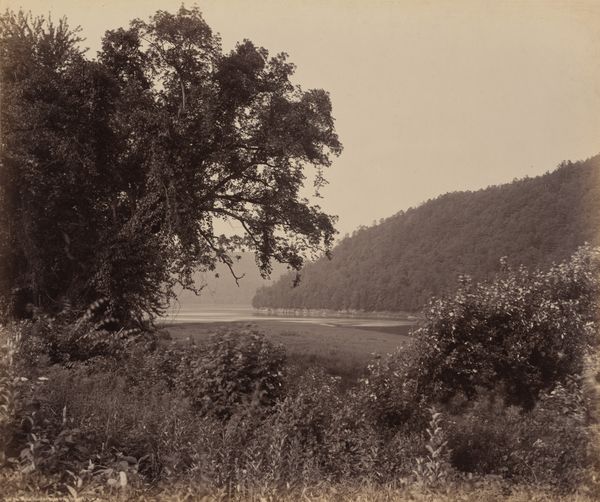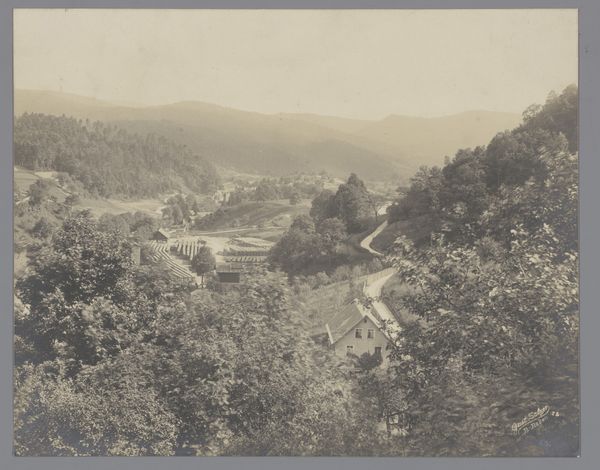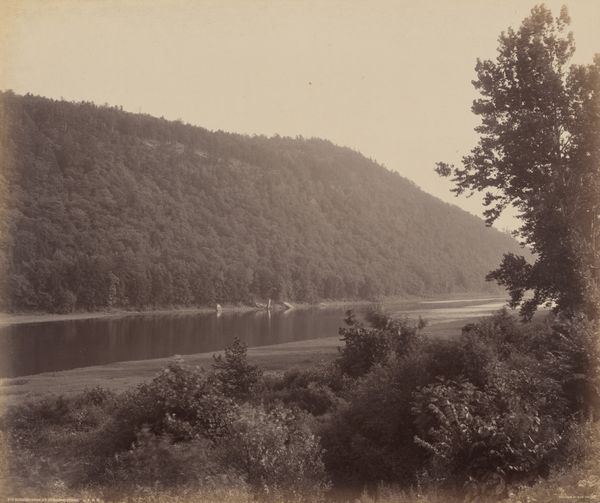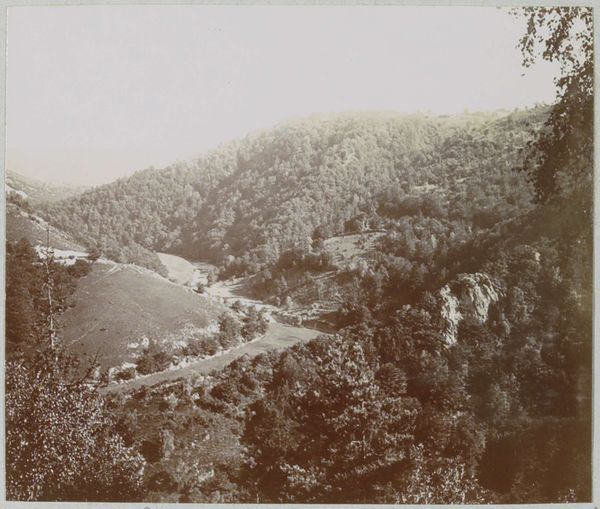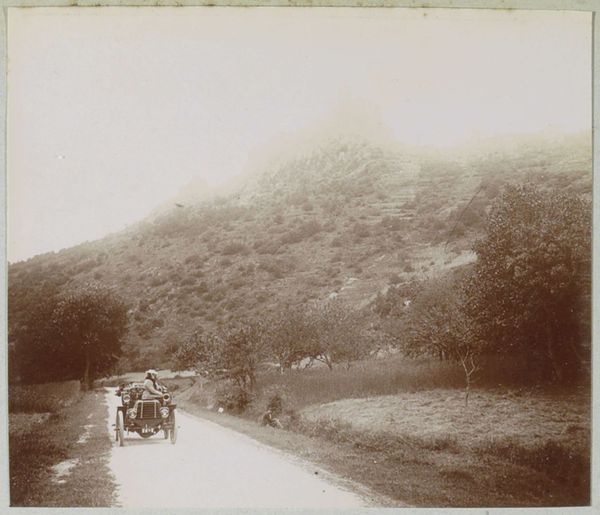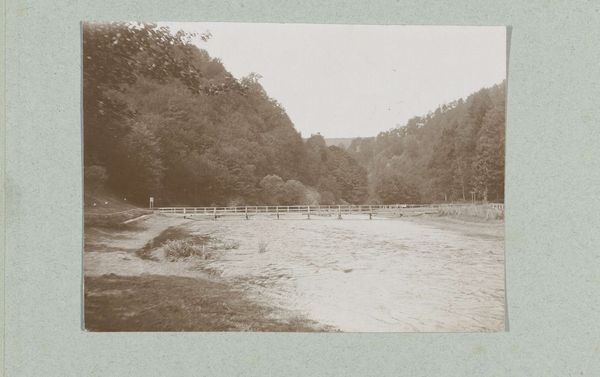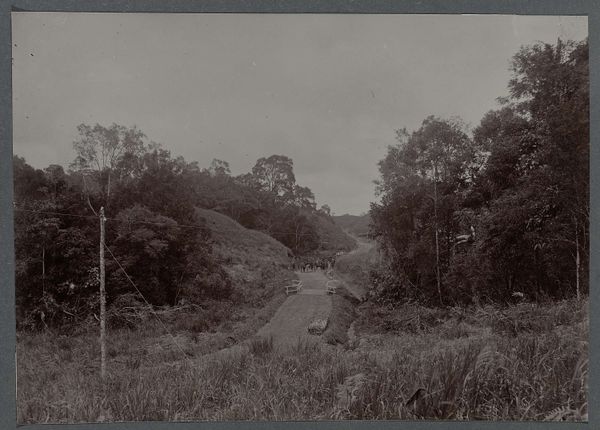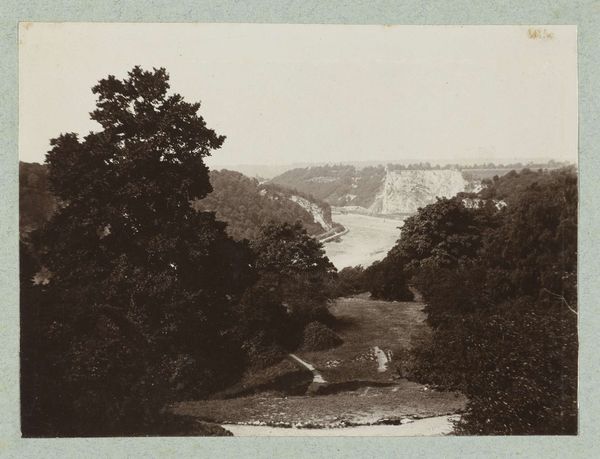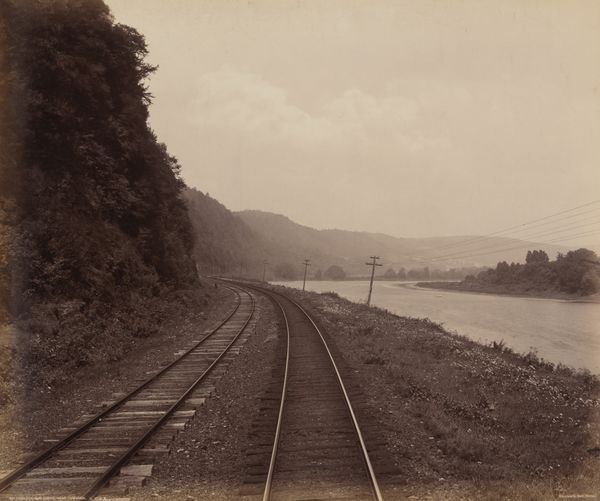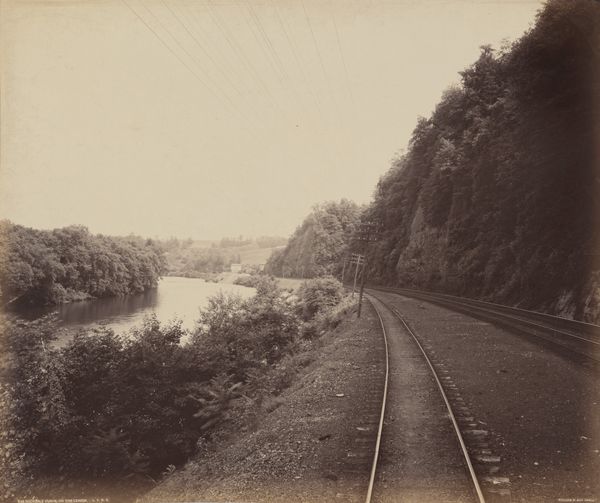
Dimensions: image: 43.7 × 52.2 cm (17 3/16 × 20 9/16 in.) mount: 49.6 × 59 cm (19 1/2 × 23 1/4 in.)
Copyright: National Gallery of Art: CC0 1.0
Curator: Up next, we have "The Susquehanna At Wyalusing", a gelatin-silver print made around 1895 by William H. Rau. Editor: It’s beautiful! Though rendered in monochrome, there is so much texture, particularly in the foliage. It gives the impression of a peaceful, almost mystical space. Curator: Rau was well-known for his landscape photography, capturing sites along major railway routes. He sought to portray an idealized view of the American landscape, much like the painters of the Hudson River School. It spoke to progress and westward expansion at the turn of the century. Editor: Absolutely. The river itself carries symbolic weight – it is an artery connecting different regions and peoples. Water, in general, often represents change and the flow of time, which certainly resonates here. Do you think the image portrays a balanced view of expansion and landscape? Curator: That's where things get complicated. The late 19th century witnessed increased industrialization, rapid urbanization and westward expansion. While photographs like this promoted the possibilities for industry and expansion, they often ignored their costs. Native populations, of course, were violently displaced. Editor: Yes, even here there is something a bit mournful and bittersweet. The mist might conceal progress, the unseen scars on this landscape. Curator: Indeed. The "picturesque" framing aesthetic tends to overlook less savory aspects of westward expansion, reflecting a specific kind of cultural and economic aspiration. Editor: It's interesting how visual languages of progress – rivers, trains, clear skies, and untouched land – can sometimes conflict with, and yet occasionally conceal, the lived reality of that era. It calls for a critical assessment of photography’s power. Curator: Absolutely. Even seemingly "natural" or "untouched" scenes have embedded social, political, and historical complexities, especially relating to land use, natural resources, and who has access to both. Editor: This exploration invites one to look closer – not just at what's in the photograph, but also what perspectives are obscured. Curator: Well said. It’s a fascinating example of how art captures both ideals and erasures.
Comments
No comments
Be the first to comment and join the conversation on the ultimate creative platform.
